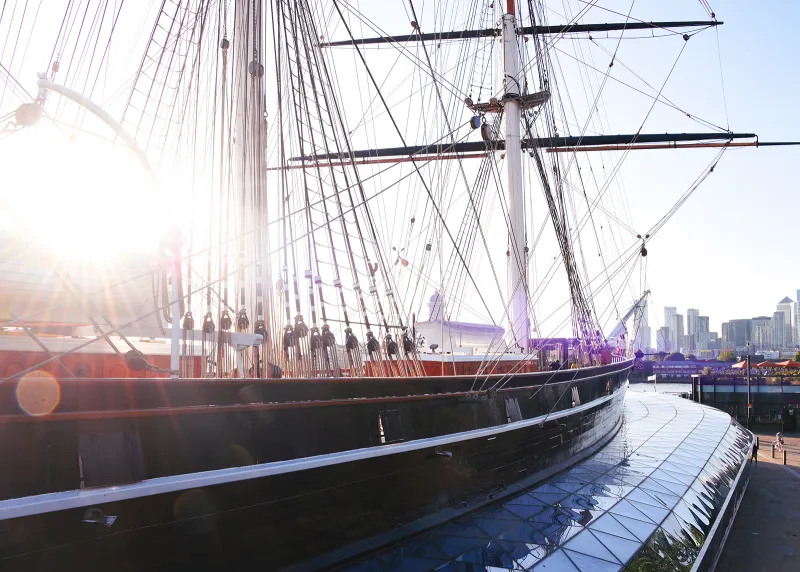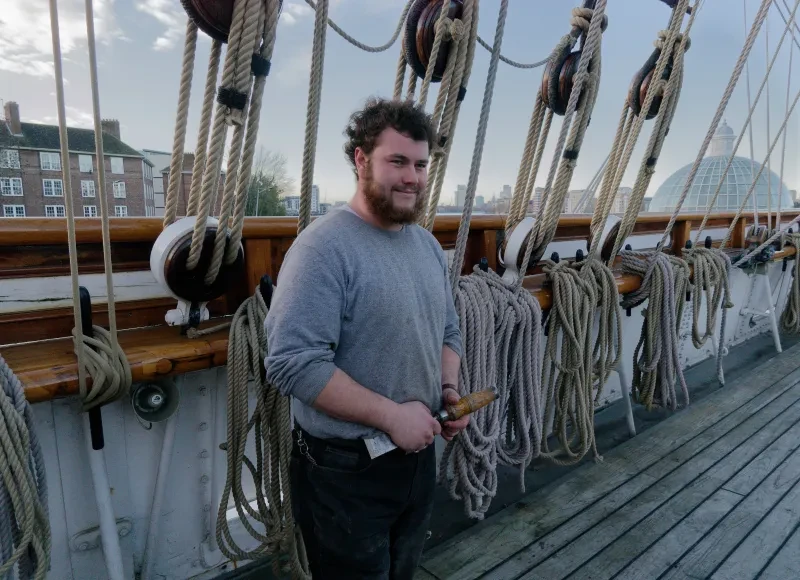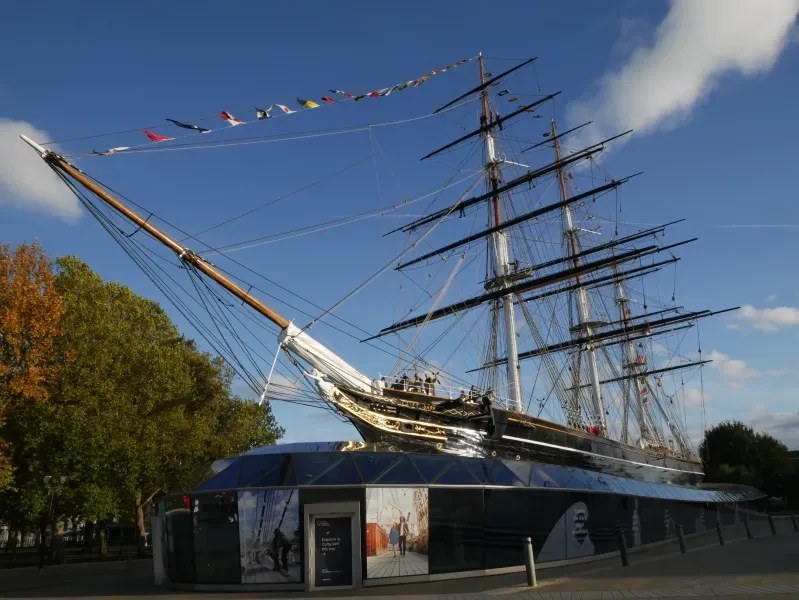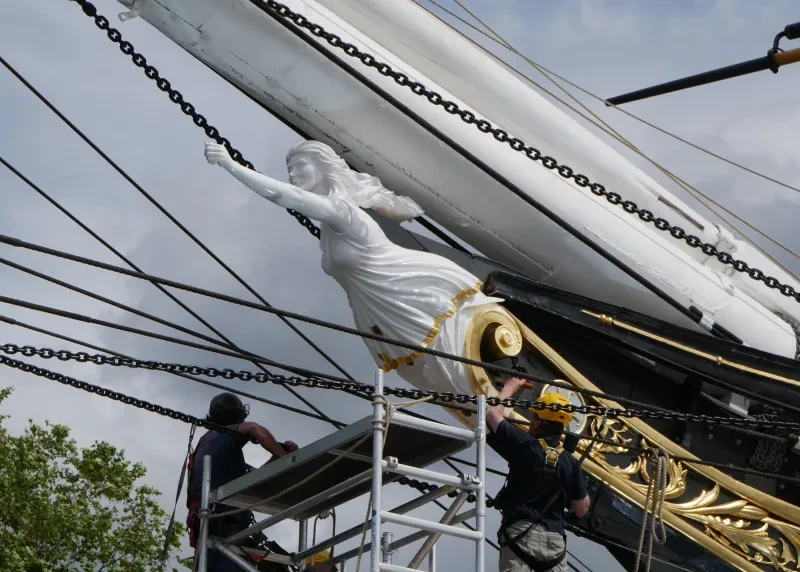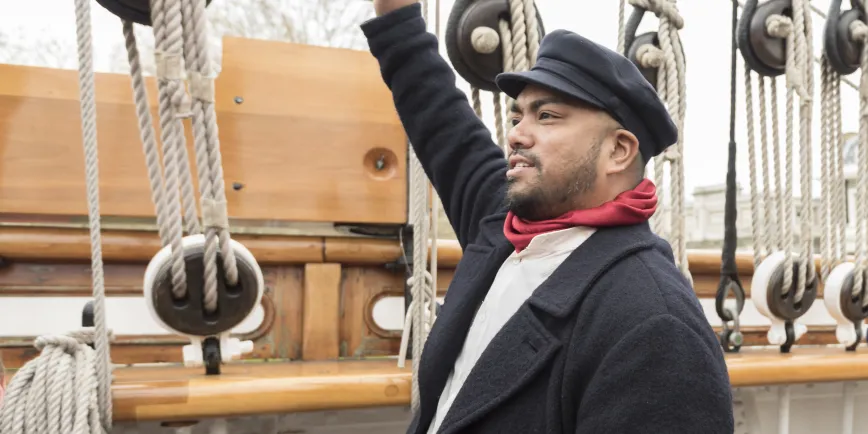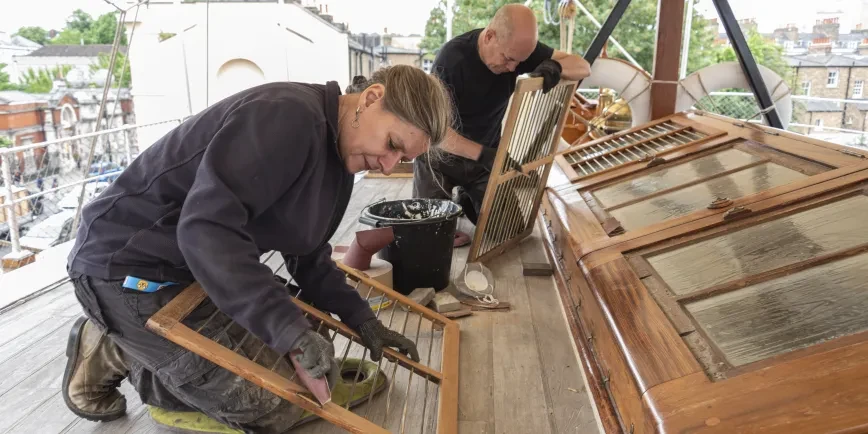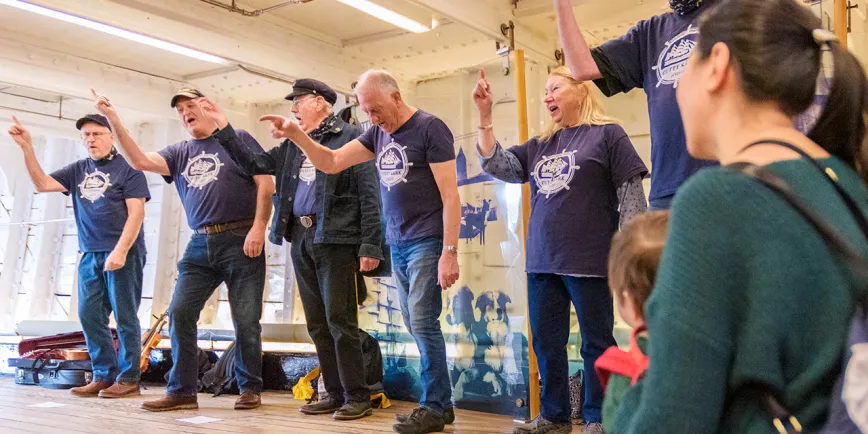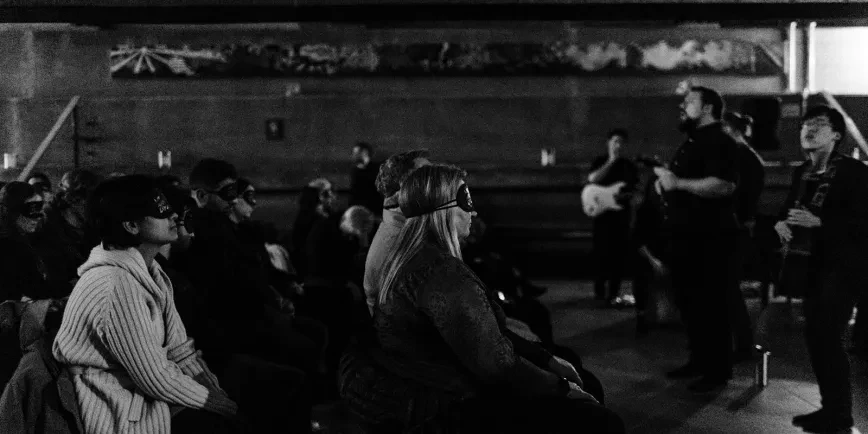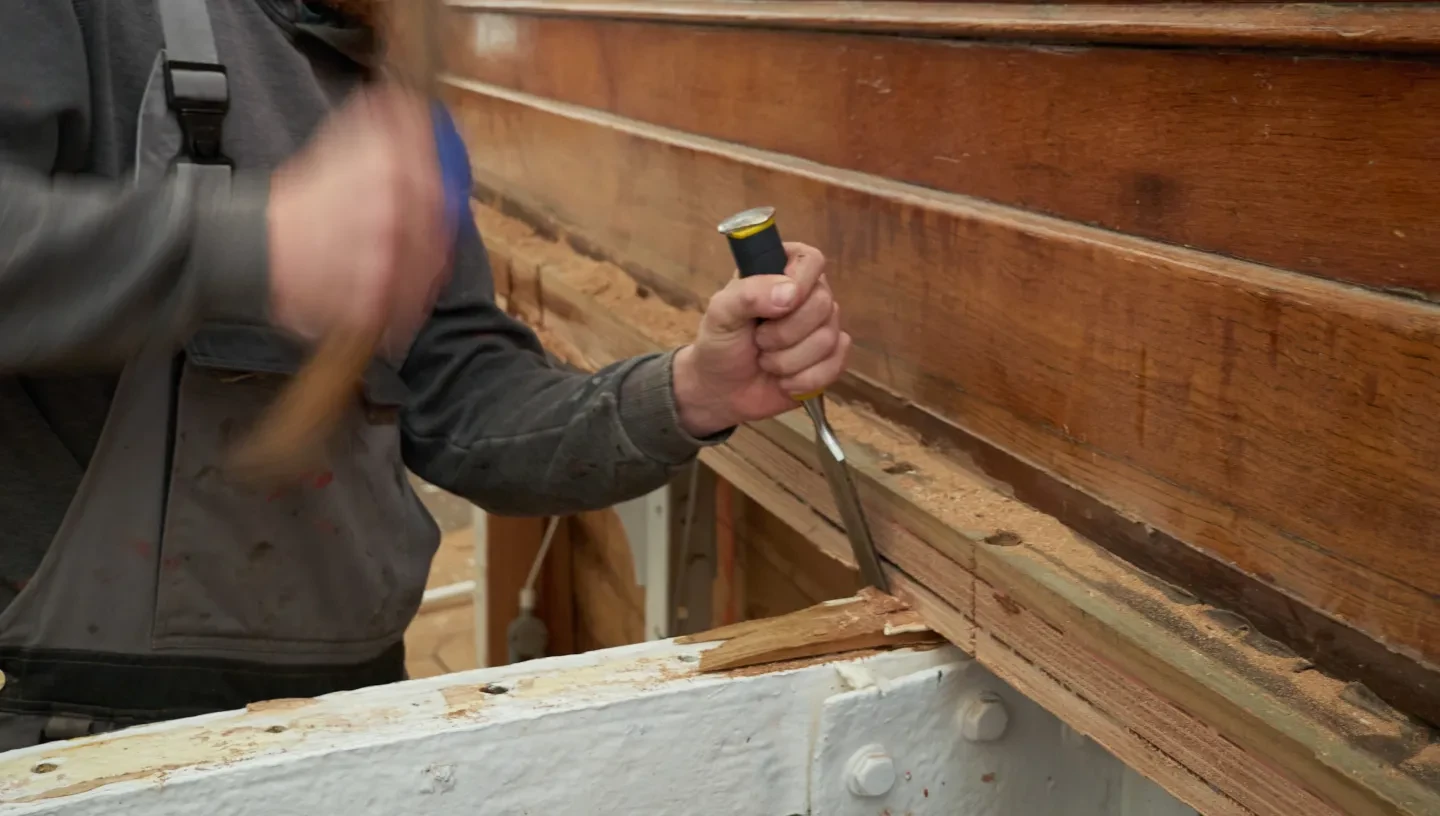
While at sea, Cutty Sark’s crew needed to constantly maintain and repair the ship to ensure it stayed safe and afloat.
Even though it no longer sails, ongoing care is still needed to make sure the 155-year-old ship survives for us all to enjoy.
Every day, our team of shipkeepers chip, paint, polish and repair all parts of the ship. They also carefully monitor its condition, looking for any changes. If you've visited before, you may well have spotted them in action.
What do Cutty Sark's shipkeepers do?
Cutty Sark is made from many different materials – such as teak wood, rock elm wood, iron and brass – which all need different methods of care. In part this care is needed to make the ship look good, but more importantly it ensures that serious damage is avoided or repaired.
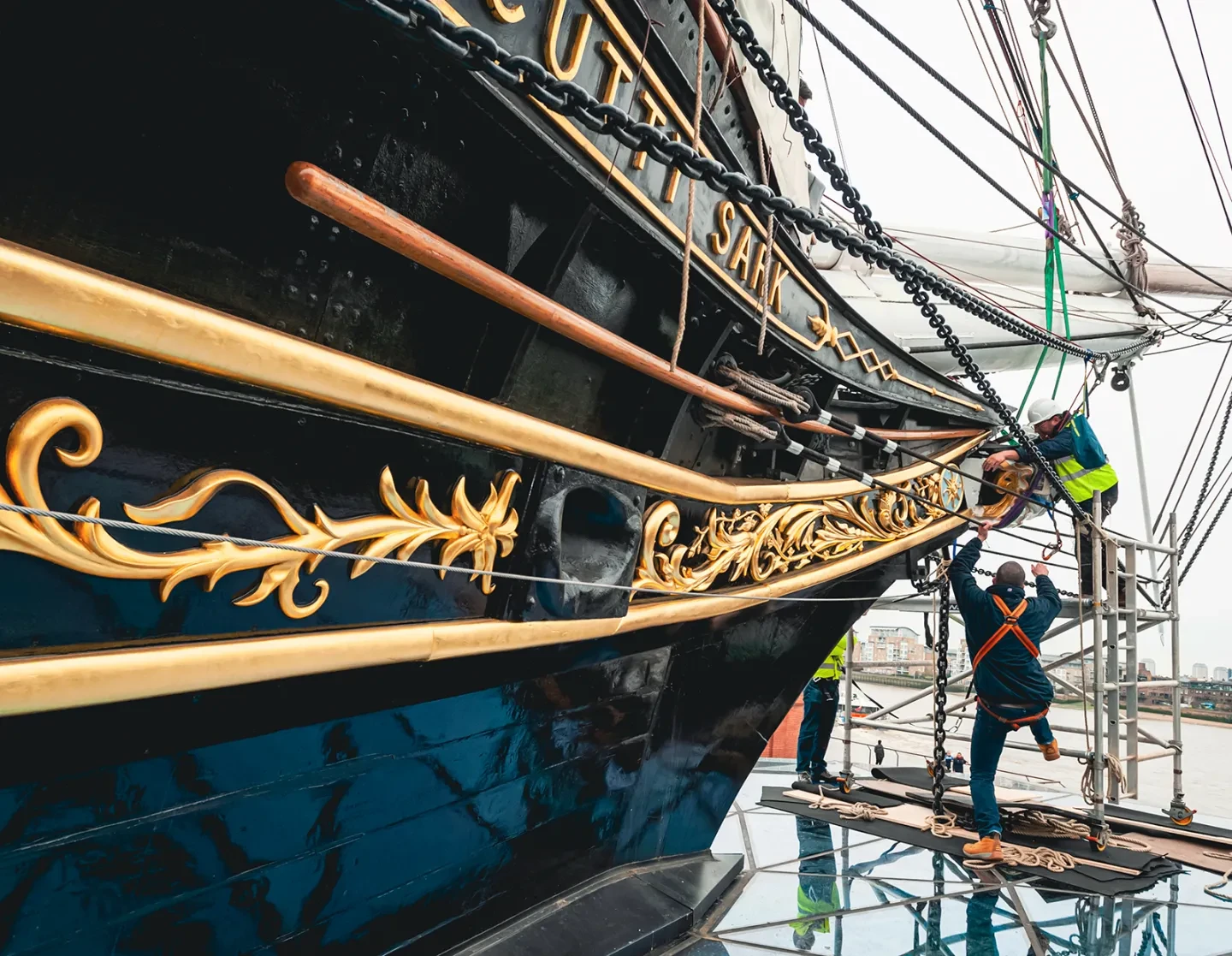
Much of the ship’s maintenance is planned on a yearly cycle. Cutty Sark is exposed to the elements which affects its components differently depending on the material. For example, the wood can shrink or expand due to external temperature changes. This can mean cracks or even leaks.
Some jobs – such as polishing the brassworks – start again almost as soon as they have finished. Other jobs happen less frequently and arise from a pressing need.
What did the conservation project involve?
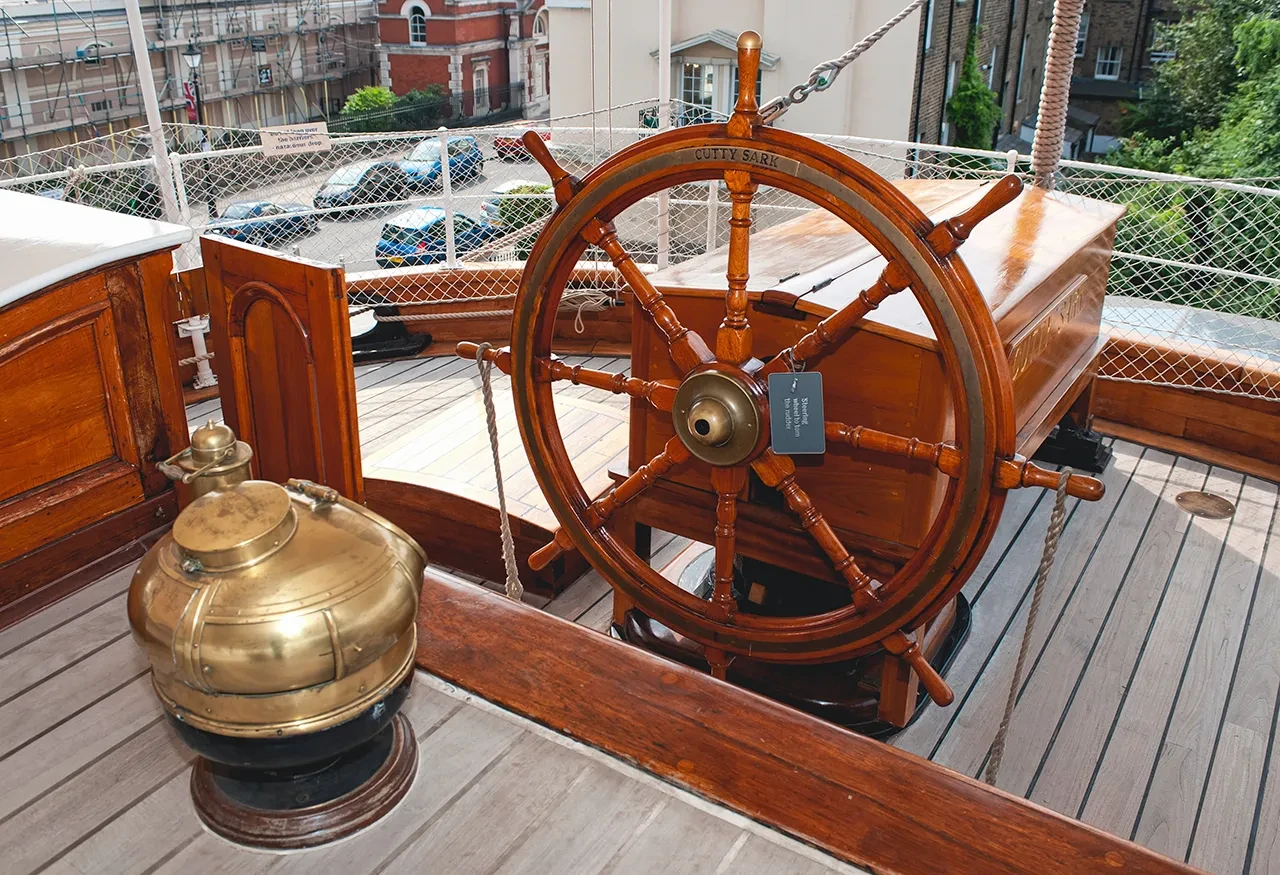
The poop deck (pictured) – the raised area at the stern, or back, of the ship – has been laid with new planks to ensure everything below it remains dry.
Between 2023 and 2024, our team of shipkeepers, working with specialists TS Rigging, have replaced the current deck using traditional techniques – a process that has taken six months.
The new planks are made from ‘iroko’, a West African tropical hardwood that has similar properties to the original teak. Teak is a high quality and durable wood, but it is now very difficult to ethically and sustainably source.
Fibres of hemp rope, known as oakum, were driven into the gaps between planks using caulking tools. The video below shows this work in action, in a clip taken from 1954 when Cutty Sark first arrived in Greenwich.
Pitch, a tar-like substance made from bituminous materials, was used to seal the joins.
"We’re trying to keep the ship alive, and it’s fulfilling to think that Cutty Sark will last longer because of this project," explains project manager Chris Wood.
